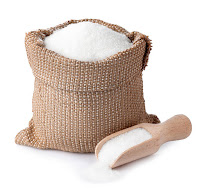
with campus executive chef Tom Barton
As a chef, seasoning and flavoring of food is one of the most important things that we do.
What is the difference between seasoning and flavoring?
Seasoning is enhancing the natural flavor of a particular product while flavoring is changing the natural flavor of that product.
For example: when roasting a chicken simply adding salt and pepper enhance the natural flavor of the chicken but if you were to enhance with a BBQ rub, that would change the natural flavor.
Knowing when and what to season and flavor foods with is a skill that I am constantly working on. Hopefully at this point everyone knows that excessive use of salt is a health issue that should be taken seriously. As someone who prepares food for others, we have an obligation to serve tasty food that is also good for you.
Here are a few ways to reduce the amount of your salt intake:
Read nutritional labels
You would be amazed at the amount of sodium in some of your favorite foods especially those that are pre-prepared. If you do buy pre-prepared foods compare a few different brands as they typically vary between brands
Prepare foods
Prepare foods yourself as much as possible that we you have direct control over seasoning and flavoring. Experiment with using fresh herbs to enhance flavors
Reconsider portion sizes of your food
Try making herb salt
- Take 2-3 cups loosely packed herbs such as parsley, oregano, sage, thyme, cilantro, rosemary or basil and combine with ½ cup coarse salt such as kosher salt.
- Place in food processor and pulse until you have achieved a course grind being careful not to process into a paste.
- You can spread evenly onto a baking sheet and leave at room temperature for several days until the mixture becomes dry or alternatively you can place in a 200 degree oven and for approx one hour or until dry.
- In either case place into an air tight container and can be stored for up to 6 months.


